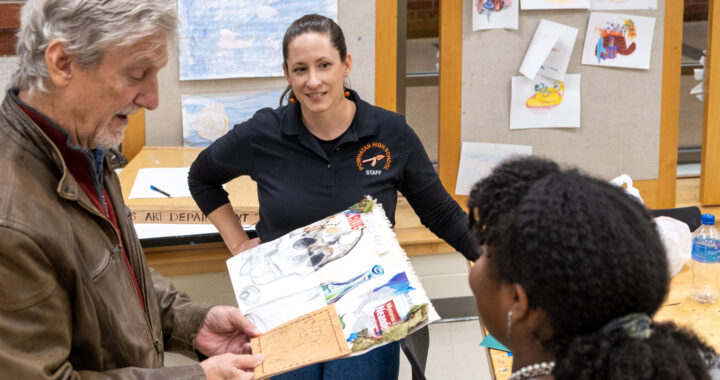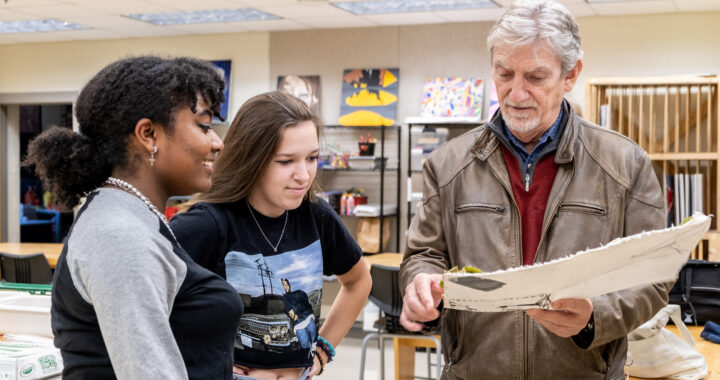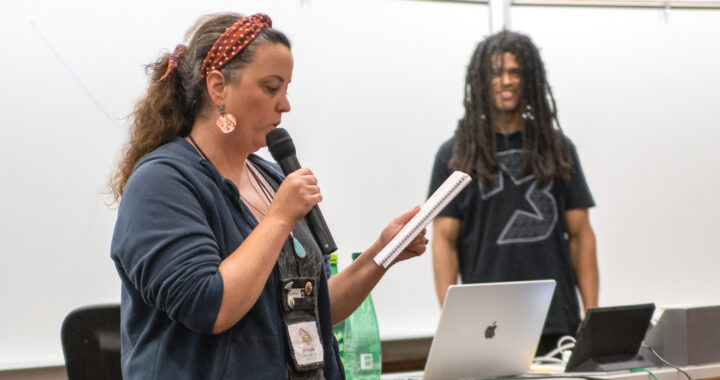There are many misconceptions that keep teachers from embracing this research-backed, experiential, engaging instructional method. Since 1994, Partners in the Arts has trained and supported public school educators in integrating the arts into their classrooms. Explore some of the myths surrounding arts integration, as well as the proven ways in which arts integration is effective and worthwhile.
Myth 1: Arts integration doesn’t have a place in a STEM classroom.
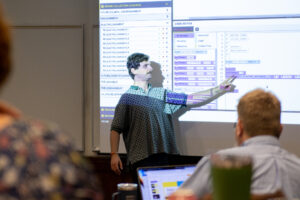
Thomas Brownell taught teachers to mix beats via coding through the use of EarSketch at the annual Joan Oates Institute summer course.
Truth: The scientific method mirrors the creative process.
The skills students are developing in STEM classes fit hand in hand with experiential learning through arts integration:
- inquiry
- observation
- creative problem solving
- design thinking
- reflection
- collaboration
- communication
These processes are also echoed in the engineering design process and historical thinking methods. The more students encounter and practice these competencies in various settings, the more ingrained they will become.
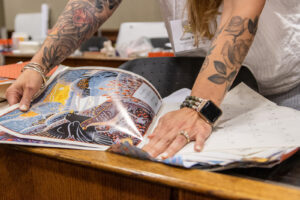
Teachers at the Joan Oates Institute summer course practiced many hands-on creative forms.
Myth 2: Arts integrated learning is only for “artsy” teachers or arts specialists.
Truth: We all have the tools to observe, draw, move, act, sing, and make music.
Arts integration is a method of teaching, which asks only for teachers to be curious, collaborative, reflective, and willing to be vulnerable and flexible. Formal training in the Arts as a discipline – with a capital A – is not necessary to bring art elements into the classroom.
The process and student experience of creating, developing, and demonstrating understanding through creative work is the primary focus. This way, assessment can be objective and not based on the pure aesthetic “value” of an end product.
Myth 3: I’m not an artist or art teacher, so I can’t assess arts integrated lessons and projects.
Truth: Focusing on student choice and process removes subjectivity, allows open-ended questions, and helps provide a lens of objective analysis of student work.
A common barrier to implementing arts integrated teaching is the misconception that non-arts educators must assess the quality of students’ creative work in how well they executed the elements of a given art (e.g. visual art, dance, drama, music).
The focus of arts integrated teaching and learning, however, is the assessment of students’ choices and their ability to contextualize those choices within standards-based learning. With training and resources, teachers can develop:
- learner-centered units and assessments that have transparent expectations
- tasks that empower students to take an active role in their own learning
Myth 4: Arts integration only reaches and serves some students.
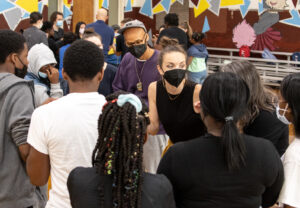
NYC-based tap group Dorrance Dance came to Binford Middle School to perform and lead a workshop supporting school community-building.
Truth: Integrated learning serves all students by empowering their voice, providing opportunities for real world application, and developing critical thinking and problem solving skills.
The creative process is a platform through which students learn to observe, experiment, reflect, and apply what they’ve learned to their own context and lived experience. Every student brings into the classroom their own experiences, passions, and communities. Arts integrated learning and teaching enables these personal points of reference to content standards.
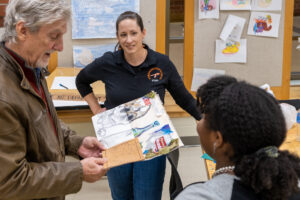
Art teacher Jill Ward trained with Partners in the Arts to integrate content connections into her classroom.
Myth 5: Arts integration in classrooms means we don’t need arts teachers in the building.
Truth: Arts integration makes room for valuable cross-curricular collaboration.
Arts integrated teaching practices set the foundation for innovative collaboration between arts and non-arts teachers, as well as professional artists and cultural institutions. This provides students with opportunities to engage with creative practices at varying layers of expertise. They get to explore content through the lenses of multiple disciplines and engage in deeper learning of rigorous arts and non-arts standards throughout their integrated experiences.
Myth 6: Arts integration takes too much time.
Truth: The initial lift is worth the reward.
Arts integration is a paradigm shift to deeper and community-connected learning. Just as with any new process or method, introducing arts integration into your teaching practice requires concentrated time and energy.
But with experience and coaching support, teachers have reliably found that integrating creative practices and aligning arts and non-arts standards becomes natural and enhances students’ engagement and school community, as well as understanding and retention of content material. Plus, integrated learning is intrinsically collaborative, meaning partnerships and collaborative planning with fellow practitioners allows for sharing of the weight and holistic learning experiences for students.
To learn more about how you can integrate community and culture into PK-12 instruction through the use of arts and technology, reach out to Partners in the Arts at the University of Richmond. We provide coaching, consulting, and training through courses as well as school-based professional development.
Alison Travis is the Program Coordinator for Partners in the Arts at the University of Richmond. She has spent ten years working in and with public schools to support integrated, innovative teaching and improve outcomes for all students.

